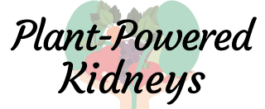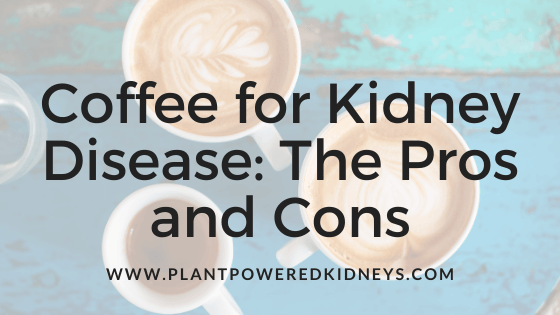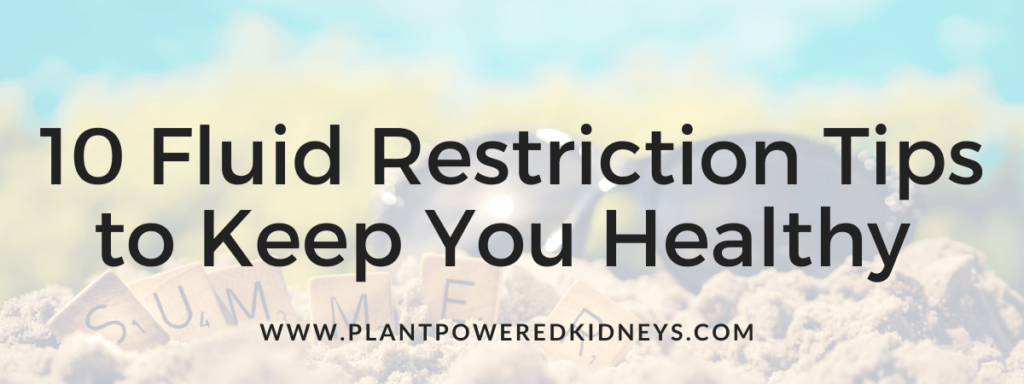Most kidney patients are told to “eat less salt” or “just stick to a low salt diet.” But what does that actually mean? In this article, we will break down exactly what sodium and salt are, how they impact kidney health, and what it means to follow a low sodium diet for kidney disease.
Table of Contents
What is Sodium?
Sodium is a mineral that is naturally occurring in many foods.
It is also added to foods during the manufacturing process.
It is an essential mineral in the human body as it helps to maintain fluid and electrolyte balance.
Sodium is also crucial for normal nerve and muscle functions.
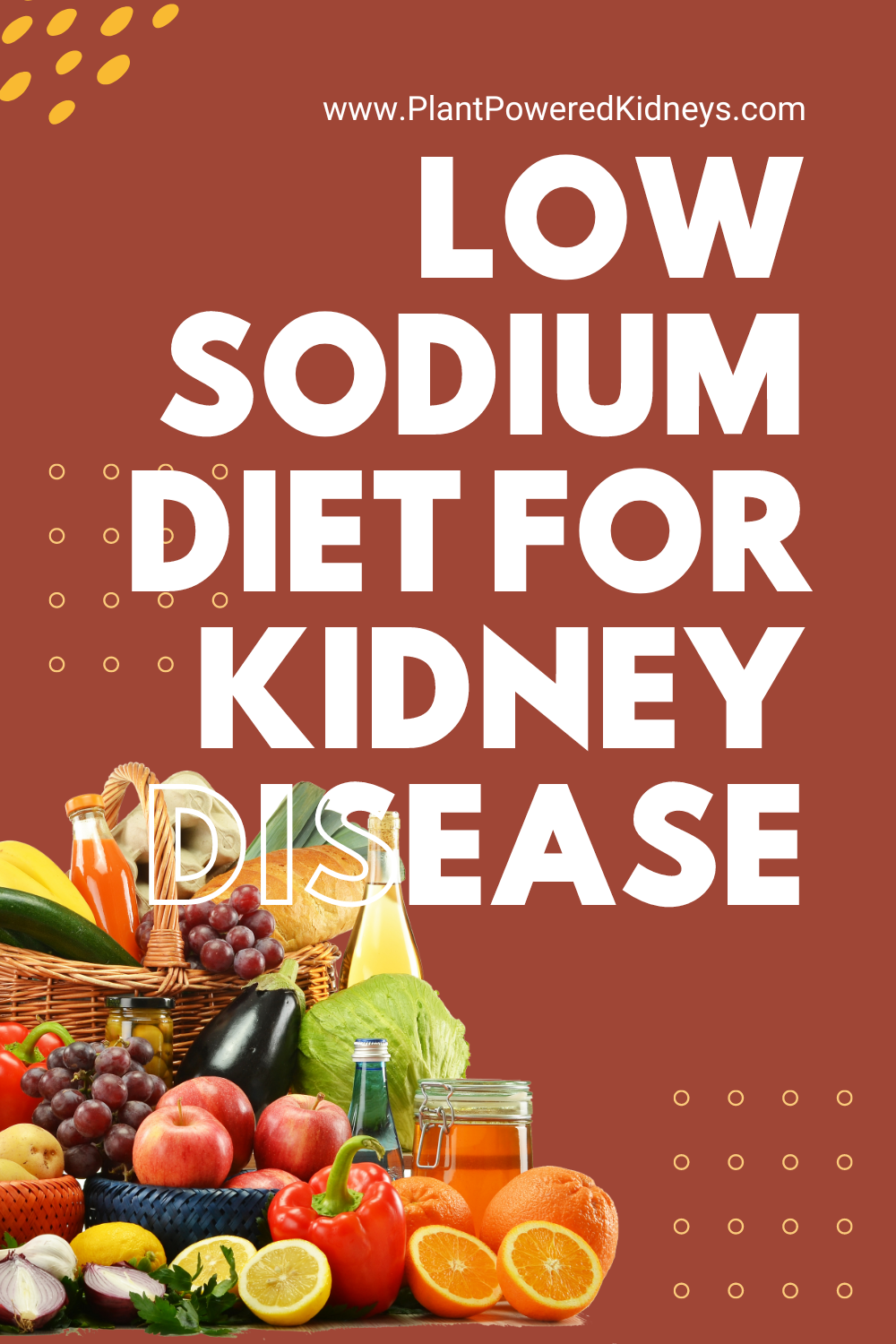
Importance of Sodium
As mentioned, sodium is an essential mineral and electrolyte in the human body.
The body needs sodium in order to control blood volume and blood pressure.
Also, it is necessary in order to maintain fluid balance and for proper nerve and muscle function.
Because of these reasons, salt is still something that is needed in our diet.
However, the challenge is rarely getting inadequate salt in the diet.
Sources of Sodium in Our Diet
The majority of sodium in our diet comes in the form of sodium chloride, or table salt.
Most of the sodium consumed in our daily diet comes from processed foods and dining out.
According to the American Heart Association, the top foods that contribute to salt in our diet are;
- Breads & Rolls
- Cured meats & Cold cuts
- Burritos & Tacos
- Sandwiches
- Soup
- Pizza
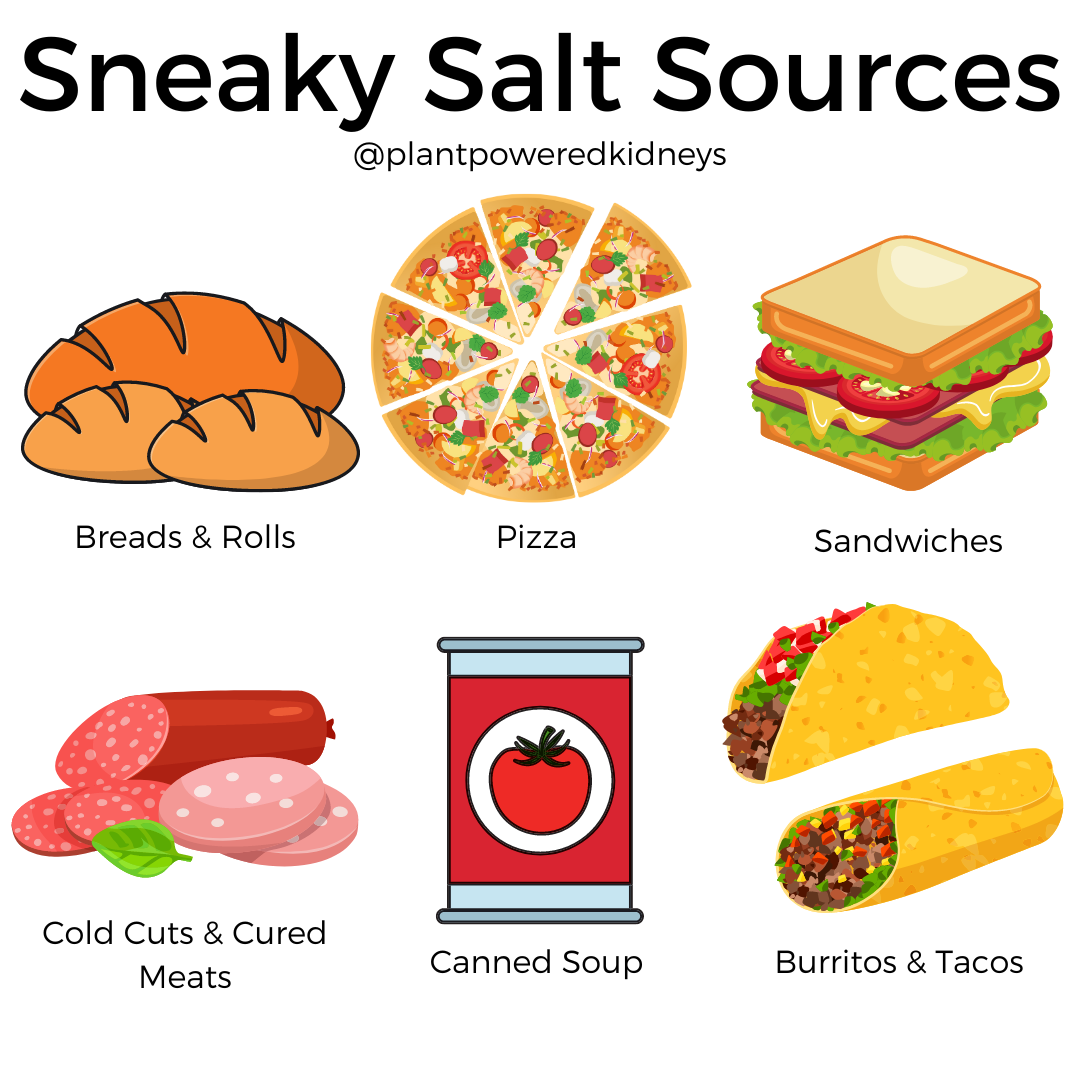
The remaining amount comes from naturally occurring sodium found in foods and added table salt during the cooking or eating process.
Sodium versus Salt
The most abundant source of sodium in our diet is what we call table salt. It is made from the minerals sodium and chloride.
Sodium is the mineral present in many foods naturally.
Both forms are how we consume sodium in our diets.
Simply put, sodium is naturally found in foods, and salt is what we add.
Sodium in Table Salt
Table salt is approximately 40% sodium and 60% chloride.
One teaspoon of table salt contains 2,300 mg of sodium.
This is equivalent to the daily recommended allowance for adults.
Salt Substitutes
Kidney patients need to not only limit their sodium intake but their potassium intake as well.
Beware of salt substitutes for kidney patients as they often contain dangerously high amounts of potassium which can actually be worse than the salt.
There are many other alternatives and salt-free seasonings available so read your labels and stay away from salt substitutes.
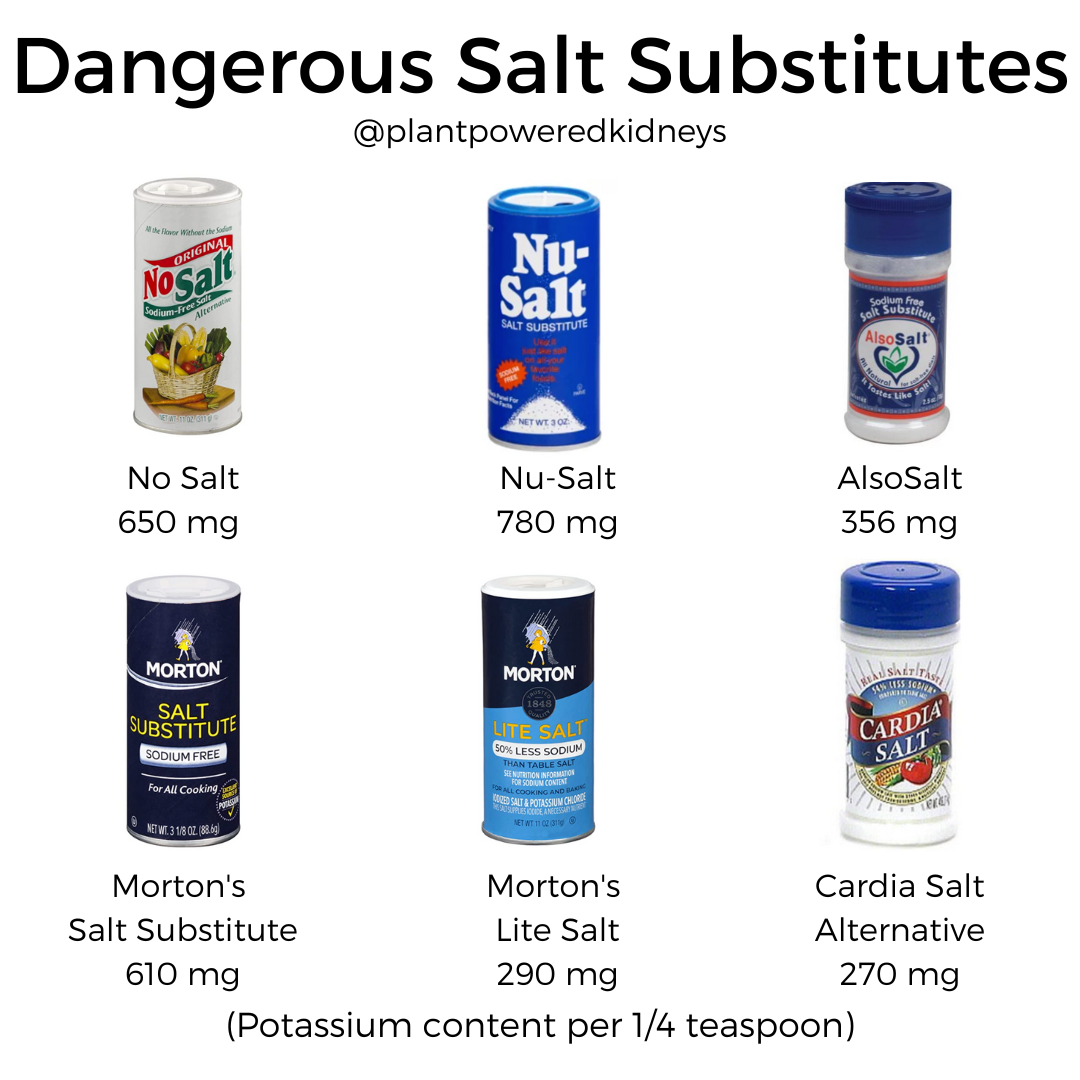
High-Sodium Foods to Limit
There are many foods that are typically high in sodium.
Here are foods that can be high in sodium:
- Packaged Snacks
- Cured meats
- Bacon
- Breads
- Pizza
- Salad dressings
- Pickled vegetables
- Canned vegetables
- Canned beans
- Bouillon and broths
- Salted nuts
- Soups
- Fast food
Keep in mind that this does not mean all foods or packaged items in these categories are high.
Many companies now offer low-sodium alternatives for those needing to follow a low sodium diet.
Sodium Guidelines for Kidney Disease
People with kidney disease or on dialysis have impaired or lost the ability to control their sodium balance.
Due to this, it is important to keep a close eye on sodium intake.
The Dietary Guidelines for Americans recommend reducing the recommended 2,300 mg per day for adults and children.
Some adults on a renal, high blood pressure, or cardiovascular diet may be limited to 1,500 mg of sodium per day.
It is recommended to keep sodium below 2,300 mg per day according to the National Kidney Foundation’s Kidney Disease Outcomes and Quality Index (KDOQI) guidelines.
Benefits of a Low Sodium Diet for Kidney Disease
There are many benefits when it comes to following a low sodium diet for kidney disease.
In doing so, people may experience;
- Improved blood pressure
- Less proteinuria (protein in the urine)
- Better weight control
- Less edema / fluid retention
- Reduced risk of heart attack and stroke
- Reduced risk of kidney stones
- Reduced risk of worsening kidney disease
Risks of Too Much Salt
The kidneys work hard on balancing our fluids and electrolytes, including sodium.
When the kidneys are damaged, they may not be able to balance everything.
Too much sodium in the diet can cause fluid retention in the body.
This excess fluid buildup can lead to uncomfortable swelling, bloating, and weight gain.
High blood pressure caused by excess sodium intake can lead to heart disease and stroke.
This is specifically important for people with kidney disease as they can not eliminate excess fluid buildup from their body which increases the risks of CVD and stroke.
High sodium intake also increases risks for headaches, kidney stones, osteoporosis, and stomach cancer.
Risks of Too Little Salt
While it may seem that aiming for no salt in the diet at all, that won’t be a healthy option, either.
As mentioned earlier, sodium is an essential mineral for the body. Those on a low sodium diet just need to limit the amount they consume.
The minimum amount of sodium to consume per day is 500 milligrams.
Eating too little salt can result in:
- Headache
- Dizziness
- Nausea
- Confusion
- Low energy
- Fatigue
- Irratibility
- Restlessness
- Muscle weakness, spasms, or cramps
- Seizures
- Coma
- Death
Interestingly, hyponatremia (low sodium in the blood) is more common in those with high blood pressure and diabetes.
Women are also at higher risk for low sodium levels.
Label Reading for a Low Sodium Diet
One of the most important and helpful things you can do when following a low sodium diet for kidney disease is to read the nutrition label of the foods you enjoy.
To do this, we’ll break down the different terms you may come across.
Low Sodium
Labeling on a food package is used to advertise when foods contain low sodium.
Low sodium means that there is 140 mg or less of sodium per serving.
Light in Sodium
A food label may include the phrase “light in sodium” when it has 50% less sodium than the original product.
Very Low Sodium
Very low sodium on a food label means that there is 35 mg or less of sodium per serving.
Reduced Sodium
Reduced sodium means that the food product contains 25% less sodium than what the item usually has.
Oftentimes the product still contains a lot of sodium.
Therefore, proceed with caution when it comes to this. Make sure to read the nutrition fact labels.
“No Salt Added”
As mentioned, low sodium means 140 mg or less of sodium per serving.
Reduced sodium is 25% less sodium than the original product.
When a label says “no salt added” this means there has been no additional salt added to the food item.
Make sure to read your nutrition labels as this does not mean the food item does not contain sodium. It just means that any sodium present is naturally occurring.
Sodium-Free
A food can be labeled as “sodium-free” when it has no more than 5 milligrams of sodium per serving.
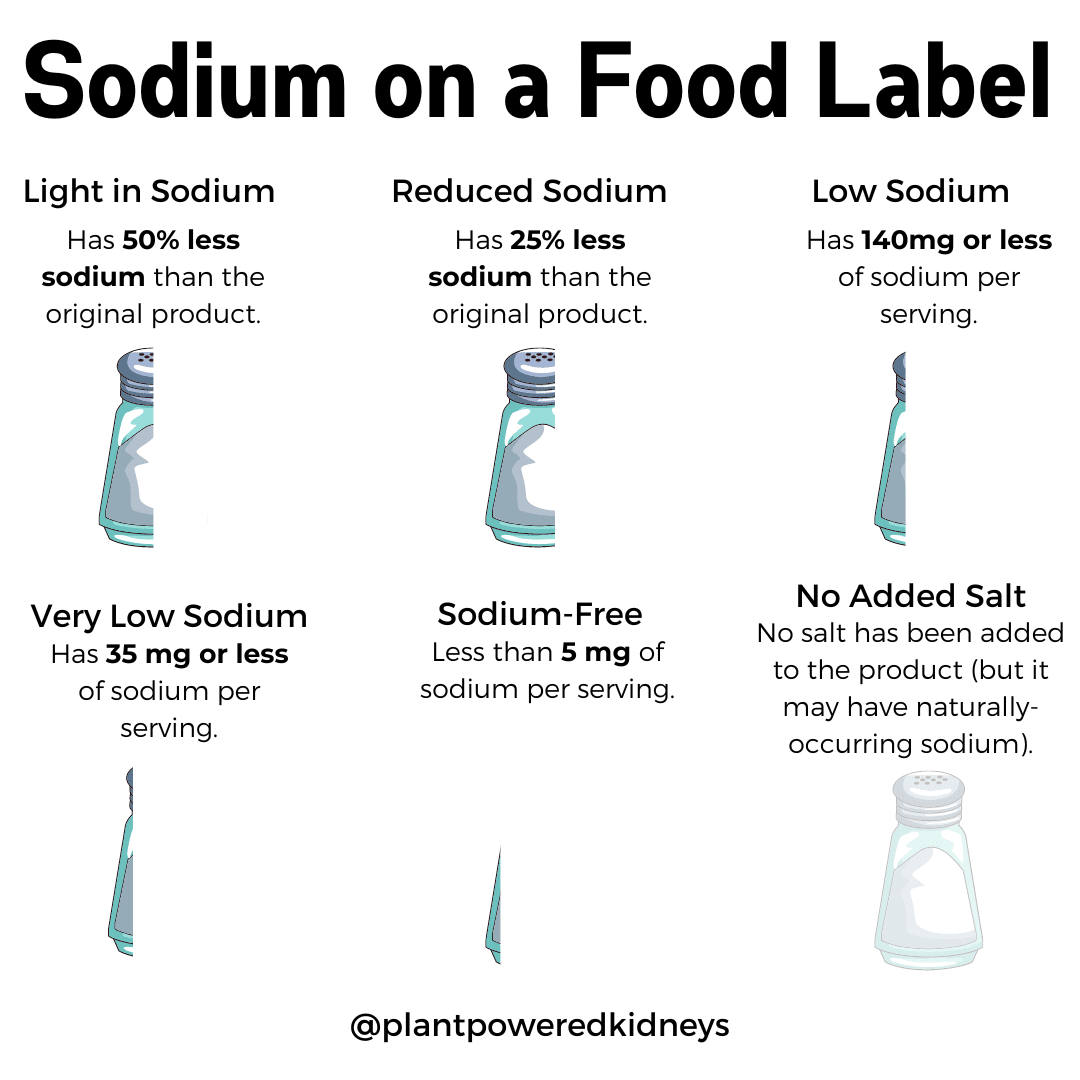
When should I choose reduced sodium?
Choosing reduced-sodium foods and snacks will help to lower your overall daily total sodium intake.
Ultimately this will reduce the health risks that come with a high sodium intake.
If you have a favorite snack that doesn’t offer a low sodium option, but rather a reduced-sodium option, that’s a great way to go.
Even though it’s not counted as low sodium, it still drops down your sodium compared to the “normal” snack you would have had before.
Does low sodium mean no flavor?
Many strongly connect sodium or salt with flavor. However, there are many ways to add flavor without the salt shaker.
Trying out different herbs and spices is a great way to get the flavor without the added sodium.

Many low sodium snacks are just as tasty as the high sodium alternatives. Especially when you remove the guilt that comes with the salt.
Try sprinkling no-salt seasonings and blends like Mrs. Dash onto popcorn, baking into homemade snack mixes, or shaking over some air-fried veggies.
Foods naturally low in sodium
There are plenty of foods that are naturally low in sodium and kidney-friendly.
These foods, which can also be used as part of your low sodium snacks, include;
- Fresh, frozen, and canned* fruits
- Fresh, frozen, and canned* vegetables
- Unsalted nuts
- Dry and canned* beans
- Whole grains
- Herbs
- Spices
*Canned foods can be low or high in sodium. Be sure to read the nutrition facts label of your canned foods to find the ones lowest in sodium.
Other Diet Concerns for Kidney Disease
While many with kidney disease should follow a low sodium diet, there may be other guidelines in place.
These guidelines will vary, but we’ll give you some starting points here.
Limiting Potassium & Sodium
While many need to beware of too much potassium, it doesn’t mean everyone needs to.
That being said, if you have been told to limit your potassium, stick to options like popcorn, tortilla chips, low-potassium fruits, and veggies.
Make sure your packaged snacks are low sodium.
Be careful with high potassium foods like potatoes, tomatoes, avocados, nuts, and seeds.
While these can definitely fit into a kidney-friendly diet, they have a lot of potassium. Portions are key.
Read more about a low potassium diet here.
Limiting Phosphorus & Sodium
If you have been told to limit phosphorus, snacks can definitely make a difference with your phosphorus balance.
The first thing you’ll want to do is check the ingredients list to make sure there are no added phosphates.
Some highly processed snacks have added phosphorus, which is not recommended for people with kidney disease.
This means avoiding any packaged snacks (even low sodium snacks) that have phosphate additives such as phosphoric acid or tricalcium phosphate for example
Read more about the low phosphorus diet here. If you’re on phosphorus binders, you can learn more about those here.
Limiting Protein & Sodium
Many kidney patients may be told to limit protein. This is particularly common for those in stages 3 through stage 5 not on dialysis.
It can be very helpful to focus on the low sodium foods described above when limiting both protein and sodium.
That is because many of the naturally low sodium foods are also lower in protein.
For example, fruits, vegetables, and whole grains will not be significant sources of both protein and sodium.
Read more about the low protein diet here.
Summary
A low sodium diet is one of the most common recommendations for kidney patients. By following a low sodium diet, kidney patients can improve symptoms like high blood pressure and proteinuria, reduce risk of stroke and heart attack, and even protect kidney function.
The minimum requirement of sodium in the body is 500 milligrams per day. Risk of low sodium in the blood, otherwise known as hyponatremia, is higher in women with history of high blood pressure and diabetes.
General guidelines start at limiting salt to somewhere between 1,500 milligrams to 2,300 milligrams per day. The lower range is less common, and seeking professional nutrition support like a registered dietitian may be helpful in following this low sodium diet.
Choosing naturally low-sodium foods such as fruits, vegetables, grains, unsalted nuts and seeds, even herbs and other salt-free spices make for a great base for a low sodium diet.
